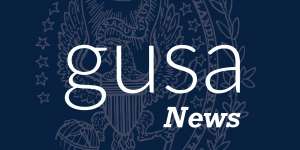On Jan. 18, 2017, The New York Times reported on a study by The Equality of Opportunity Project which ranked colleges by how many of their students come from families within the top 1 percent of the income scale versus how many students come from the bottom 60 percent. The study found that of all colleges in the United States, Georgetown had the 12th most top-heavy ratio of students from these two groups.
In the class of 2013, 20.8 percent of Georgetown students had household incomes in the top 1 percent (more than $630,000 annually) and only 13.5 percent of students had household incomes in the bottom 60 percent (less than $65,000 annually).
Georgetown’s ranking at number 12 puts the school below its academic competitors in terms of equality, with Notre Dame, Boston College, Stanford, Johns Hopkins, and the Ivies all more equitable.
In light of this study, this editorial board believes that the university must make institutional changes in order to create a more economically diverse student body. Such a student body would better reflect the country as a whole and better fulfill the university’s core Jesuit values, which promise a strong education regardless of a student’s background.
No single change in Georgetown’s policy will realize this goal. Instead, working toward greater economic diversity will require a change in the tone and attitude of the admissions philosophy to one that prioritizes accepting students from a broad range of backgrounds, rather than focusing on admission statistics and rankings.
In 1989, President Leo J. O’Donovan, S.J. first created the school’s endowment. This means that, despite its 228 year history, Georgetown has only raised scholarship money for the past 30 years. The university claims that one reason it has fewer low income students is because it has only recently dedicated itself to expanding the endowment, which is used to fund scholarships in place of student loans.
While Georgetown has shown a recent effort to increase financial aid for low-income students, fundraising for financial aid has come with continuous tuition increases. According to an email addressed to students from Provost Robert Groves, the university projects it will spend more than $180 million dollars in financial aid in the next year. However, this email, which came a day after the Times report, also announces that undergraduate tuition rates for the 2017-2018 school year will increase by 3.5 percent in addition to similar increases in room and board and meal plan costs.
Keeping to its full-need, need-blind commitment while still offering competitive academic programs and campus resources is not costless, and the university does work to help low-income students assimilate to campus life once here and ensure their success. Georgetown does have one of the highest graduation rates in the country, University spokesperson Rachel Pugh wrote in an email to the Voice.
The Times report, though, proves that despite of Georgetown’s commitment to meeting the full need of its accepted students, the university is still enrolling a disproportionately small number of low income students.
A large portion of the student body comes from elite college preparatory and Jesuit high schools. These schools produce students that are prepared for Georgetown’s coursework and also prepared to pay its price, giving the university a high yield rate—the measure of what portion of accepted applicants choose to attend a school. Thus, recruiting at prep schools and Jesuit high schools is a priority for Georgetown Admissions.
The university must place greater value on the applications from students that come from lower-income families and schools as well as those that come from elite high schools. With targeted recruitment in such areas, Georgetown can increase the number of applicants from these backgrounds.
Additionally, the university charges an application fee of $75, and while Georgetown offers a waiver for this fee, the student must get their guidance counselor to submit an official NACAC Application Fee Waiver form—adding yet another step for low income students to Georgetown’s already unorthodox and complicated application process. This isn’t a necessity. The University of Chicago, for example, waives the $75 application fee for any student who plans to apply for financial aid.
These are just some things the university could do to make a Georgetown education more accessible to lower income students. There are a wide range of other policies that have been proposed that can and should be considered and discussed. Most of all, we demand transparency and a concerted effort by Georgetown to both acknowledge the problem and work towards creating a student body that is representative of all backgrounds.




